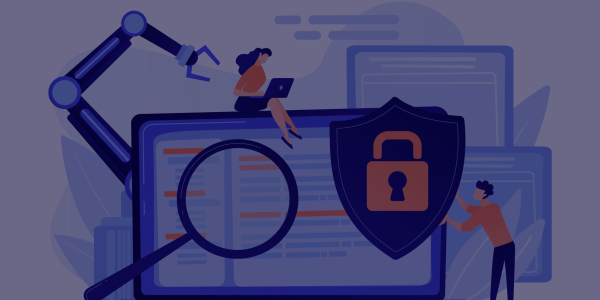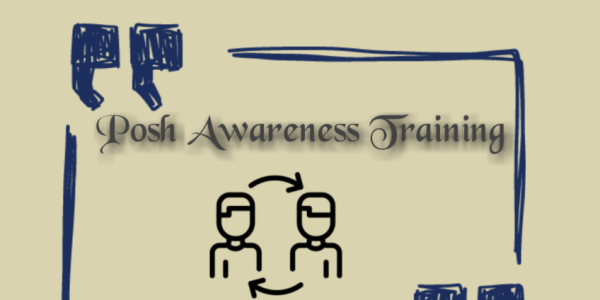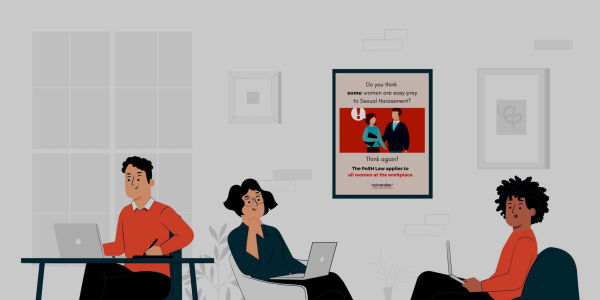What is Diversity in the workplace?
Diversity is bringing diverse people together. People of different genders, generations, varied cultures, and so on, would create Diversity in a workforce. Gender Diversity, Inter-Generational Diversity, and Cultural Diversity are the three most common types of Diversity categories that we come across at the workplace.
The LGBT Community is another category of Diversity that we would like to see more of in the workplace.
Now all this is good in terms of numbers. It’s great to say we have a gender diversity ratio of XYZ; we have a culture diversity ratio of XYZ etc. Often firms set a target while hiring and try to maintain their Diversity numbers/ratios.
But why do we need diverse people in the workplace?
And what if these diverse people don’t get along and lead to negative consequences?
The Inherent Problem With Diversity
What if they look down upon people who are not like them? What if they express their dislikes in obvious and subtle ways? Regrettably, this is a consequence of Diversity at the workplace.
Does this help or hinder the firm achieving it’s more significant objectives?
Naturally, having a Diversity ratio will not help unless the firm takes steps to ensure people respect each other. People need to respect their differences and work towards collective goals.
Discrimination at the Workplace
A typical workplace consists of several categories (few mentioned above) of the population who don’t consider themselves equals. Naturally, some of these categories will be dominant, and others will be non-dominant (minority).
The dominant groups have perceived differences, which could be in gender, skin color, lifestyle, language, age, skill-sets, etc. These dominant groups usually discriminate between the non-dominant groups and see themselves as superior.
The other side of the inequality also reciprocates this imbalance.
This discrimination often occurs at a subconscious level. The people involved are unaware of their behaviors and attitudes that cause prejudice.
For example, a Math teacher perceives a boy who has scored A+ as talented. The same teacher perceives a girl who has scored A+ as hardworking. This perception is purely cognitive discrimination, and the teacher is unaware of the distinction she has made.
Discrimination at the Structural Level– When groups have differences in access to opportunities and resources, this leads to unequal distribution of wealth and power.
So, the dominant group’s behavior further marginalizes the groups who were already at a disadvantage. Limited access to top management positions for women is an example of Structural Discrimination.
How to Address Discrimination in the Workplace?
To address these real and perceived inequalities, a systematic intervention to modify people’s behavior is required.
Inclusion attempts to bridge this gap. Hence Inclusion is not a number like Diversity but a culture. A culture where Diversity should lead to individual and collective excellence through inclusive actions.
Of course, this is no small task. That is why Diversity and Inclusion (called D&I in one breath) are two flip sides of the same coin. They are closely related, though Diversity poses challenges to Inclusion. But without Diversity (& Inclusion), there won’t be organizational growth.
According to the ESSEC Business School Diversity MOOC, D&I aims to fulfill the following main objectives:
- Diversity is a source of Innovation
- Diversity is a source of Performance.
- Firms need a workforce that reflects the Diversity of their customer base.
Two Main Approaches Why Firms Invest in D&I
Some firms look at Diversity as an ethical and social responsibility in which the firms must fulfill their obligation. They have a responsibility to address existing inequalities in society. They want to promote the Inclusion of underprivileged populations into their workforce to fulfill their responsibilities. Hence, they commit to hiring diverse groups and integrating them into the workforce and the management.
Some other firms’ final objective is Innovation and Performance. They want to tap into new markets to have substantial growth and expand their business. But new markets are not the same as existing markets. Hence, there is a need to understand new markets. One way to do this is to have representatives of the new markets right there in the workforce.
Diversity and Business Performance
The driving factor in the second approach is business. That is why the oft-repeated quote, “Diversity makes a business case.” It means that Diversity & Inclusion is good for the company’s business. It is a good investment that will show returns (ROI) in due course of time.
The recent trend in D&I is towards driving Innovation and Performance, the second approach, the reason why firms want to invest in D&I. As per an article in the World Economic Forum, the business case for Diversity in the workplace is now overwhelming in evidence.
How Diversity Generates Revenue?
A Boston Consulting Group study found that organizations with more diverse management teams have 19% higher revenues due to Innovation. This finding is significant for tech companies, start-ups, and industries where Innovation is the key to growth. It shows that Diversity is not just a metric to be strived for but an integral part of a successful revenue-generating business.
Why Firms Grapple with Diversity?
But the road to success is fraught with numerous challenges. Firms grapple with implementing D&I policies because of the above mentioned Structural and Cognitive Discrimination. Management and employees alike need to understand the complexities of their social environment at the workplace. They need to be aware of the complex power dynamics that play out between dominant and non-dominant groups, resulting in dissatisfaction of the non-dominant groups and the supremacy of the dominant groups.
Consequently, the management needs to understand that the D&I policies cannot just address a workforce portion. The need is not to integrate the minorities into the work culture, but to transform the organizational culture itself.
Transformation of Organizational Culture
This transformation is where D&I training comes in the picture. With regular training and practice, employees learn not only D&I’s basic concepts and categories but also Diversity Perceptions (Unconscious Biases) and Social Categorizations (Stereotypes).
Through examples, stories, discussions, and experiential learning, employees start to see how social stereotyping impacts what we see and how we react to our workplace environment. Training makes people realize how they have negative perceptions of social minorities and how their perception affects their understanding, evaluation, and behavior towards social minorities. This behavior, in turn, gives way to negative psychological consequences in the minds of the minorities. In the long run, this takes a heavy toll on the firm, when it loses out on great talent (and new markets).
The best practices in fostering Inclusion by top firms are also shared and discussed in Diversity and Inclusion training courses. In the words of IBM Vice -president, Global Workforce Diversity, Tim Childs, “It is imperative we see the link between Diversity and competitiveness. Because if we don’t, then we lose.”
Rainmaker training specializes in Online Diversity training (delivered virtually by D&I experts) and Unconscious Bias
training. It is soon coming up with e-modules in Gender Diversity, Inter-Generational Diversity, and Cultural
Diversity. All of these will significantly contribute towards your firm achieving its Diversity targets, not
just in numbers, but also in culture. Equally important, this Inclusive culture will lead to Innovation and
Performance and breaking into new markets, which is otherwise a daunting task.
Author: Sumali Nagarajan
DISCLAIMER – No information contained in this website may be reproduced, transmitted, or copied (other than for the purposes of fair dealing, as defined in the Copyright Act, 1957) without the express written permission of Rainmaker Online Training Solutions Pvt. Ltd.
References:
The business case for diversity in the workplace is now overwhelming: Published by Vijay Eswaran on World Economic Forum
How Can Diversity and Inclusion Be A Source of Innovation and Performance?: Published by Junko Takagi on ESSEC Business School Diversity MOOC
How Diverse Leadership Teams Boost Innovation: Published by By Rocío Lorenzo, Nicole Voigt, Miki Tsusaka, Matt Krentz, and Katie Abouzahr on BCG Henderson Institute
Difference Is Power: Published by Keith H. Hammonds on Fast Company











